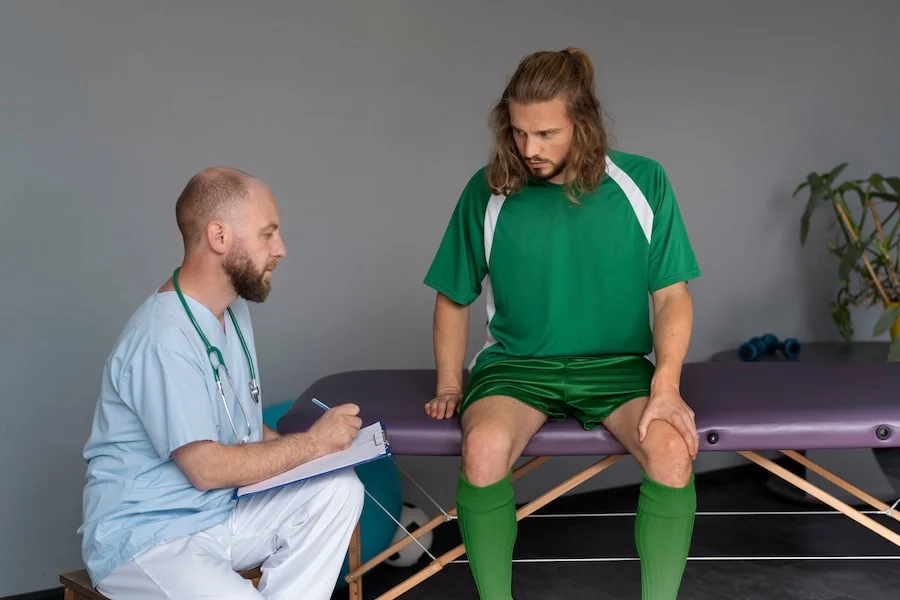Temporomandibular joint disorders (TMJ) affect the joints and muscles responsible for jaw movement, often leading to pain, discomfort, and difficulty performing daily functions such as speaking, eating, and even yawning. TMJ disorders can arise from various causes, including injury, stress, misalignment, or arthritis, and their symptoms can be challenging to manage. While conventional medical treatments such as medications and surgery are common, physiotherapy provides an effective, non-invasive approach to alleviate pain, improve jaw function, and restore overall well-being. We will explore how physiotherapy techniques can play a pivotal role in the treatment of TMJ disorders.
Understanding the Mechanism of TMJ Disorders
Before we delve into how physiotherapy in dee why can help, it’s important to understand the mechanism of TMJ disorders. The temporomandibular joint connects the jawbone to the skull and is responsible for all jaw movements. These movements allow functions like chewing, speaking, and swallowing. When this joint is affected, individuals often experience discomfort, pain, clicking sounds, or difficulty moving the jaw. The causes of TMJ disorders are varied, with factors such as jaw misalignment, teeth grinding, poor posture, and even emotional stress contributing to the problem. These factors can lead to muscle tension, inflammation, and restricted jaw movement, making it difficult for the affected individual to perform daily activities comfortably. Physiotherapists use various techniques to address these underlying causes and manage the symptoms.
The Role of Physiotherapy in Treating TMJ Disorders
Physiotherapy offers a comprehensive, non-invasive treatment plan for TMJ disorders. Physiotherapy aims to address the mechanical, muscular, and postural components that contribute to TMJ dysfunction. One of the first steps a physiotherapist will take is to assess the patient’s posture and jaw alignment. Poor posture or uneven alignment can often place undue strain on the TMJ and surrounding muscles, leading to pain and dysfunction. Physiotherapists will guide patients in improving their posture to relieve pressure on the jaw and reduce discomfort. Treatment will also focus on specific exercises to strengthen and relax the muscles surrounding the TMJ, which can help reduce pain and improve jaw mobility.
Manual Therapy Techniques for TMJ Relief
Manual therapy techniques are an essential part of physiotherapy for TMJ disorders. These hands-on treatments involve gentle movements and manipulation of the muscles and joints around the jaw. Physiotherapists may use joint mobilization and soft tissue release techniques to address tightness and reduce inflammation in the affected area. Joint mobilization involves applying gentle pressure to the temporomandibular joint to restore its normal function and alleviate pain. Soft tissue release relieves tension in the muscles surrounding the jaw, such as the masseter and temporalis muscles. By reducing muscle tightness and improving joint mobility, these manual therapy techniques can help patients regain normal jaw function and experience significant pain relief.
Exercise Therapy to Improve Jaw Function and Mobility
Exercise therapy is another crucial component of physiotherapy for TMJ disorders. A physiotherapist will design a customized exercise plan to address specific issues related to jaw function. These exercises typically involve gentle movements to improve the range of motion in the jaw and strengthen the muscles around the temporomandibular joint. Regular jaw exercises can help reduce stiffness, increase flexibility, and promote better coordination between the muscles that control jaw movements. For individuals who suffer from teeth grinding or jaw clenching, relaxation exercises may also be recommended to help reduce tension and prevent further strain on the jaw. Over time, these exercises can help individuals regain control over their jaw movements and reduce the severity of their symptoms.
Posture Correction and Ergonomic Guidance
Posture plays a significant role in the development and management of TMJ disorders. Poor posture, particularly when sitting for long periods, can strain the jaw, neck, and surrounding muscles unnecessarily. Physiotherapists provide posture correction strategies and ergonomic guidance to help alleviate this strain and promote overall well-being. They may assess how patients sit, stand, and perform daily tasks, offering suggestions for adjustments. Simple changes such as adjusting the height of a work chair, ensuring proper alignment of the spine, and incorporating breaks during long periods of sitting can profoundly impact reducing TMJ-related pain. Physiotherapists will also recommend exercises to strengthen the neck, shoulders, and upper back muscles to support a more aligned and comfortable posture.
Pain Management Techniques for TMJ Disorders
Managing pain is one of the key goals in the treatment of TMJ disorders. Physiotherapists employ pain management techniques to help patients feel more comfortable and prevent further injury to the temporomandibular joint. In addition to manual therapy and exercise, modalities such as heat or cold therapy, ultrasound, and TENS (Transcutaneous Electrical Nerve Stimulation) may be used. Heat or cold packs can reduce inflammation and soothe sore muscles around the TMJ. Ultrasound therapy utilizes sound waves to penetrate deep into the tissues, promoting healing and reducing pain. TENS uses electrical impulses to stimulate nerves and block pain signals. By combining these modalities with manual therapy and exercise, physiotherapists can provide patients with a holistic approach to managing TMJ-related pain.
Physiotherapy offers a multifaceted approach to treating temporomandibular joint disorders that can provide significant relief from pain and discomfort. By using techniques such as manual therapy, exercise, posture correction, pain management, and stress reduction, physiotherapy addresses the physical and emotional aspects of TMJ disorders, leading to improved jaw function and overall well-being. The holistic nature of physiotherapy makes it an excellent choice for individuals seeking non-invasive treatments for TMJ dysfunction. With personalized treatment plans and ongoing support, physiotherapists can help individuals manage and recover from TMJ disorders, improving their quality of life.
ALSO READ: Nate Kidney Lakeland: Leading Innovation in Kidney Health







